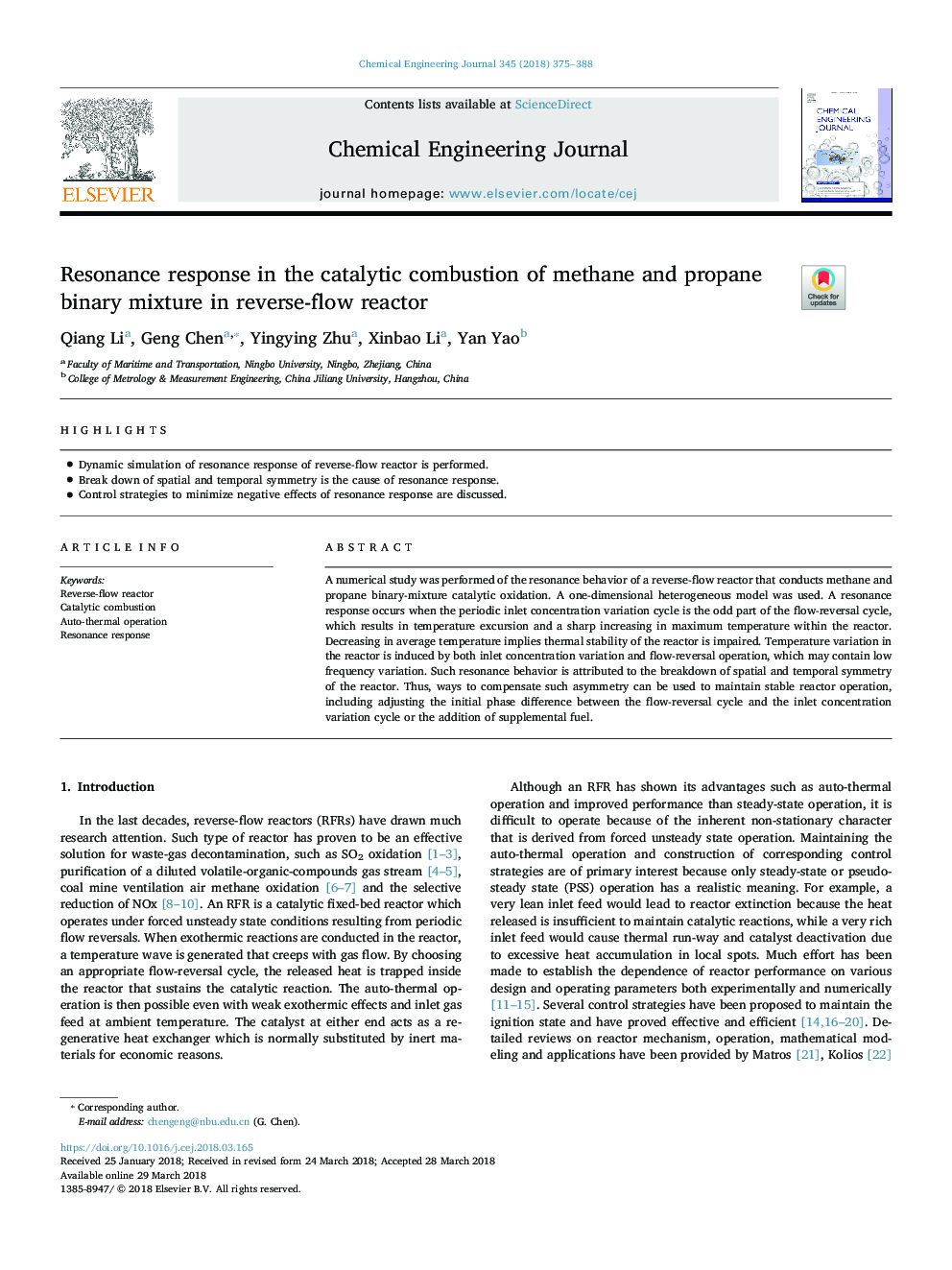| Article ID | Journal | Published Year | Pages | File Type |
|---|---|---|---|---|
| 6579488 | Chemical Engineering Journal | 2018 | 14 Pages |
Abstract
A numerical study was performed of the resonance behavior of a reverse-flow reactor that conducts methane and propane binary-mixture catalytic oxidation. A one-dimensional heterogeneous model was used. A resonance response occurs when the periodic inlet concentration variation cycle is the odd part of the flow-reversal cycle, which results in temperature excursion and a sharp increasing in maximum temperature within the reactor. Decreasing in average temperature implies thermal stability of the reactor is impaired. Temperature variation in the reactor is induced by both inlet concentration variation and flow-reversal operation, which may contain low frequency variation. Such resonance behavior is attributed to the breakdown of spatial and temporal symmetry of the reactor. Thus, ways to compensate such asymmetry can be used to maintain stable reactor operation, including adjusting the initial phase difference between the flow-reversal cycle and the inlet concentration variation cycle or the addition of supplemental fuel.
Related Topics
Physical Sciences and Engineering
Chemical Engineering
Chemical Engineering (General)
Authors
Qiang Li, Geng Chen, Yingying Zhu, Xinbao Li, Yan Yao,
